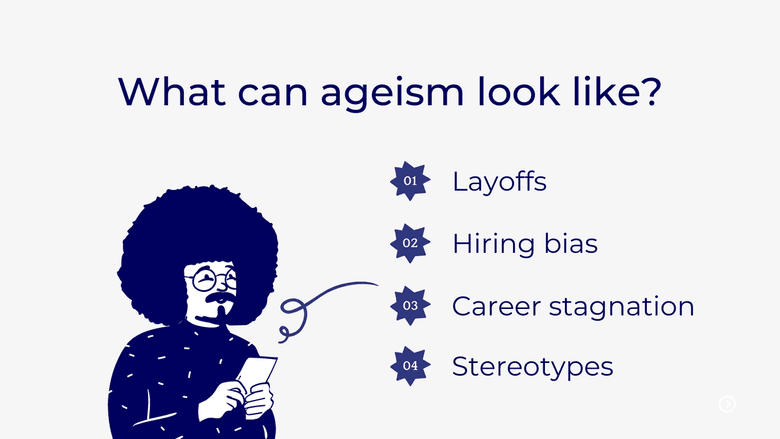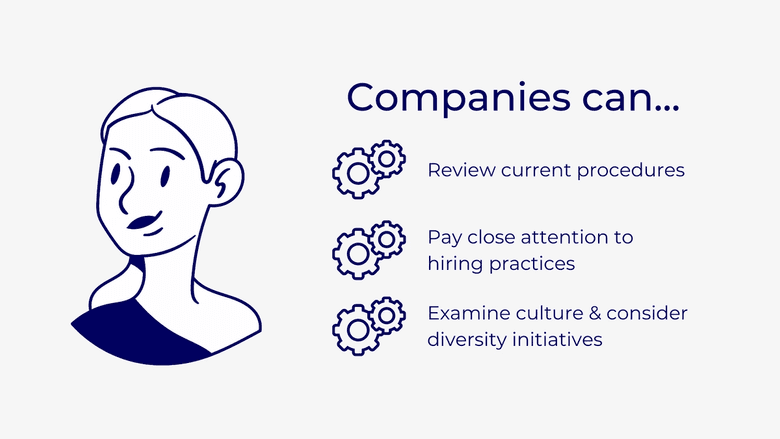The Ageism Problem in the Technology Industry
How does the technology sector perpetuate ageism, and what solutions can companies and individuals implement?
There is an ageism problem in the workforce. A 2018 Dice Diversity and Inclusion Survey found that Baby Boomers and Gen-Xers are at-risk groups for age discrimination, with 68 percent of Baby Boomers saying that they have been discouraged from applying for jobs due to their age.
Ageism is a particularly widespread problem in tech jobs, as older workers are seen as less likely than young people to understand the newest technology. The median age of an employee in the US workforce is 42; in the tech industry, it’s 31 years old.
It’s even lower at specific companies: Payscale reported that a Facebook employee’s median age is 28, a Google employee's is 30, a LinkedIn employee's is 29, and Microsoft employee's is 33. Executives, including Facebook’s CEO Mark Zuckerberg, are on record as saying they would rather hire young kids because they are smarter. Not to mention that younger workers are cheaper, as recent grads will tend to work longer hours and accept less money for their labor. Silicon Valley in particular has a reputation for refusing to hire older workers.
In the last year, the COVID-19 pandemic has caused more age discrimination against older workers or workers with medical disabilities. During the pandemic, more older workers were not called back to work, and their employers didn’t offer them safety accommodations.
In a time of rampant age discrimination, it's important to stay informed. So what does age bias at a workplace look like, how can individuals combat ageist stereotypes, and how can companies make sure they are not committing age discrimination against their workers?
Examples of Ageism in the Tech Sector

According to the Bureau of Labor Statistics, 32.2 percent of Americans aged 65 to 69 are still working or looking for work, an increase of over twenty percent in the past twenty years.
However, even as the workforce gets older, the tech sector is one of the worst places for older employees to find work. Since 2008, 150 tech companies in Silicon Valley faced 226 complaints of age discrimination.
Common complaints include layoffs targeted at older employees and age bias in the hiring processes at a major company. Older employees may also suffer from a lack of training or promotion opportunities that go to young people instead, as they are seen as a more important investment.
There is a widely known stereotype that older people are tech-illiterate, whereas millennials and younger age groups are tech and social media savvy. It’s assumed that older people cannot and will not learn new technology. However, there are many older employees in the tech sector that are willing to grow and adapt, the same as their younger counterparts.
Keep an eye out for these biases within yourself and your workplace. After all, the first step to combatting unconscious bias is knowing what to look for.
Advice for Individuals

The burden of combatting ageism shouldn't fall on those impacted by it. However, until it's eradicated, older employees can learn how to market themselves in the current climate.
1. Stay informed about advancements
Know how in the tech industry is important. It’s important to stay up to date with advancements in tech. Making sure that you’re informed enough to do the job is important, no matter what age group you fall in.
2. Emphasize your extra experience
Showcase how your extra years of experience can benefit your company in ways that less experienced hires couldn't yet. For example, older employees can develop a specific skillset by specializing in an area in the tech sector. Even if they don't have experience with newer code, they can become a specialist in their area.
3. Point out leadership qualities
Older people are more likely to have critical thinking and communication skills, plus the experience to make them qualified for senior positions. You can also act as a mentor or role model for younger employees, and you have a stronger network after spending decades in the workforce rather than just a few years.
4. Touch on additional benefits
When you’re speaking to hiring managers or recruiters, point out the various benefits that a company has when hiring older workers. If you have the skills necessary for the job, you will require less training than a new grad. Senior hires are also more likely to stay in the same position, especially if they cannot afford retirement. Younger people are much more likely to switch jobs, so hiring older employees creates less turnover.
Advice for Companies

Many companies, including Google and HP, are facing lawsuits due to age discrimination. Avoiding ageism isn’t just the right thing to do, it also positively impacts a company’s reputation and bottom line. Here are a few steps companies should take to limit this form of discrimination.
1. Review current practices
Companies need to review their workforce data to find signs of ageism and bias across all company functions, including hiring, promotions, salaries, turnover, and performance ratings. Once there is an understanding of the issues within a company, then it can set objectives and form a plan to make the work environment more inclusive to all ages.
2. Pay close attention to hiring
The language used in job descriptions can show an implicit bias toward young people. Instead of describing the person they want to hire, a company should describe the job itself instead.
A company’s hiring practices should not screen out candidates based on periods of unemployment, as older workers often struggle to get hired. Job hunts for older workers can be a much longer, more arduous process because so many companies favor youth. Recruiters can do more work to combat age discrimination by purposefully seeking out older employees.
The interview process should also be designed to avoid ageism. Asking specific questions about experience helps, and all applicants should be asked the same questions. Establishing standardized hiring criteria and followable procedures will also help combat implicit bias, whether it’s ageism, or gender or racial discrimination.
It is also key not to ask older employees about retirement; the average retirement age is increasing, and many people do not want to retire early and can still complete their work.
3. Examine company values and culture
Companies should review their culture and make sure it is applicable to all age groups, without implicit bias toward younger people. The idea of "cultural fit" can prevent older candidates from being hired, if the company's cultural standards skew young.
Diversity initiatives of all kinds are important to combatting bias. Companies should commit to creating an inclusive culture with open communication. This will foster a deeper connection between employees and their companies, and can go a long way to making older employees feel welcome in their workplace.
Companies also need to divorce stereotypes about senior workers from reality. Even though most of the reporting about the tech industry can make it seem Mark Zuckerberg and other young CEOs are the norm, the truth is that they are the exception to the rule. The average age of successful entrepreneurs is 40, and twice as many successful entrepreneurs are over 50 as under 25, according to ReadWrite.
The perspective and experience of older employees is key to creating a diverse company. Diversity initiatives should focus on attracting, retaining and ensuring the comfort of older tech workers
Ageism Solutions In Action
There are various ways that the tech industry has moved away from age discrimination in the past few years. One of them is the tech migration away from Silicon Valley and San Francisco, since people can now work in tech from any corner of the globe.
Mentoring programs and career development opportunities are being offered to older employees as well, along with elder care leave for employees to support aging parents. Some tech executives are even getting bonuses for diversity initiatives, when it comes to age as well as gender, race, and other ways the tech industry can improve its inclusion.
The most important thing for the tech industry moving forward is to recognize and remove unconscious bias, and stop stereotyping different kinds of workers - including older ones.
The information provided herein is for general informational purposes only and is not intended to provide tax, legal, or investment advice and should not be construed as an offer to sell, a solicitation of an offer to buy, or a recommendation of any security by Candor, its employees and affiliates, or any third-party. Any expressions of opinion or assumptions are for illustrative purposes only and are subject to change without notice. Past performance is not a guarantee of future results and the opinions presented herein should not be viewed as an indicator of future performance. Investing in securities involves risk. Loss of principal is possible.
Third-party data has been obtained from sources we believe to be reliable; however, its accuracy, completeness, or reliability cannot be guaranteed. Candor does not receive compensation to promote or discuss any particular Company; however, Candor, its employees and affiliates, and/or its clients may hold positions in securities of the Companies discussed.
